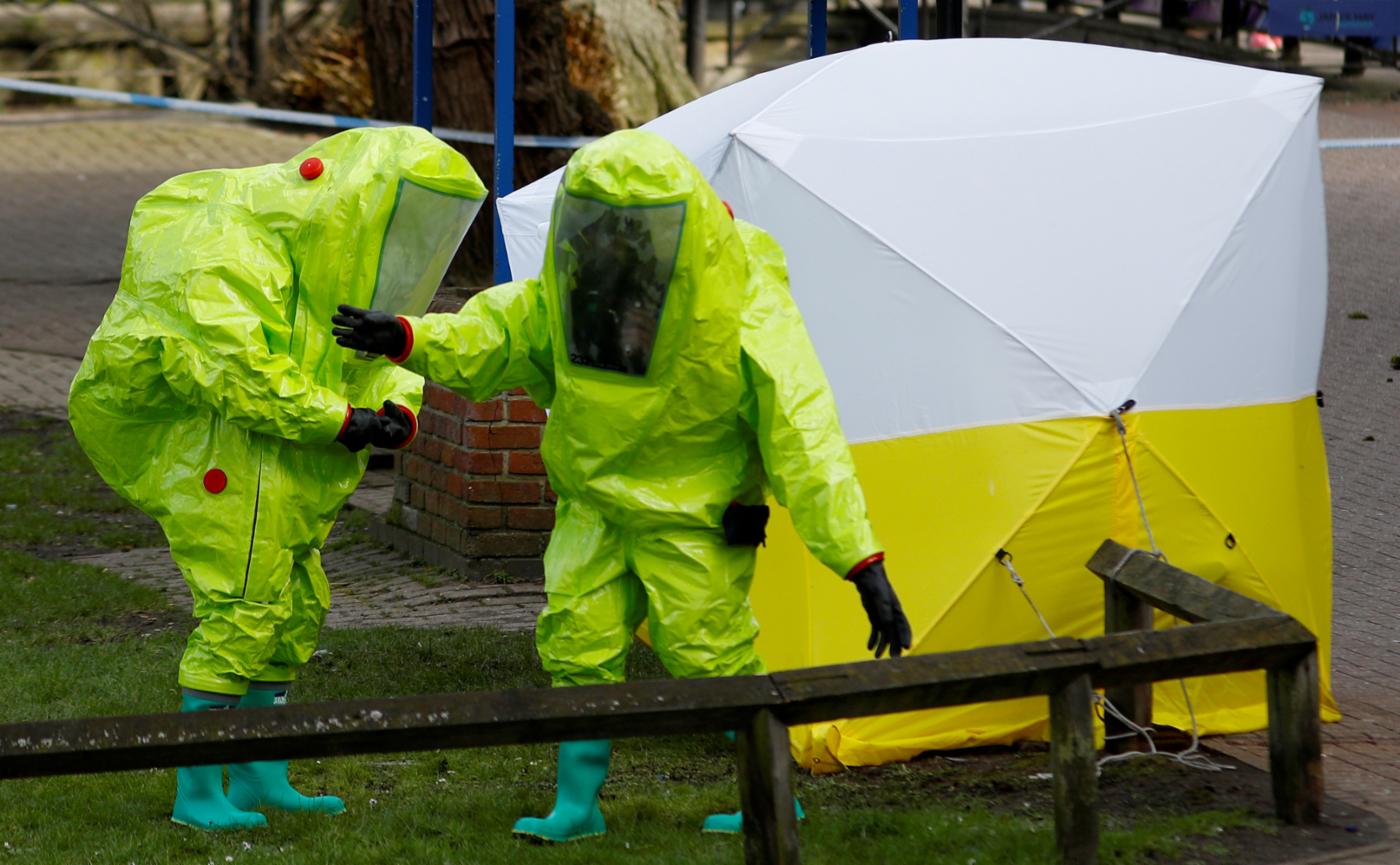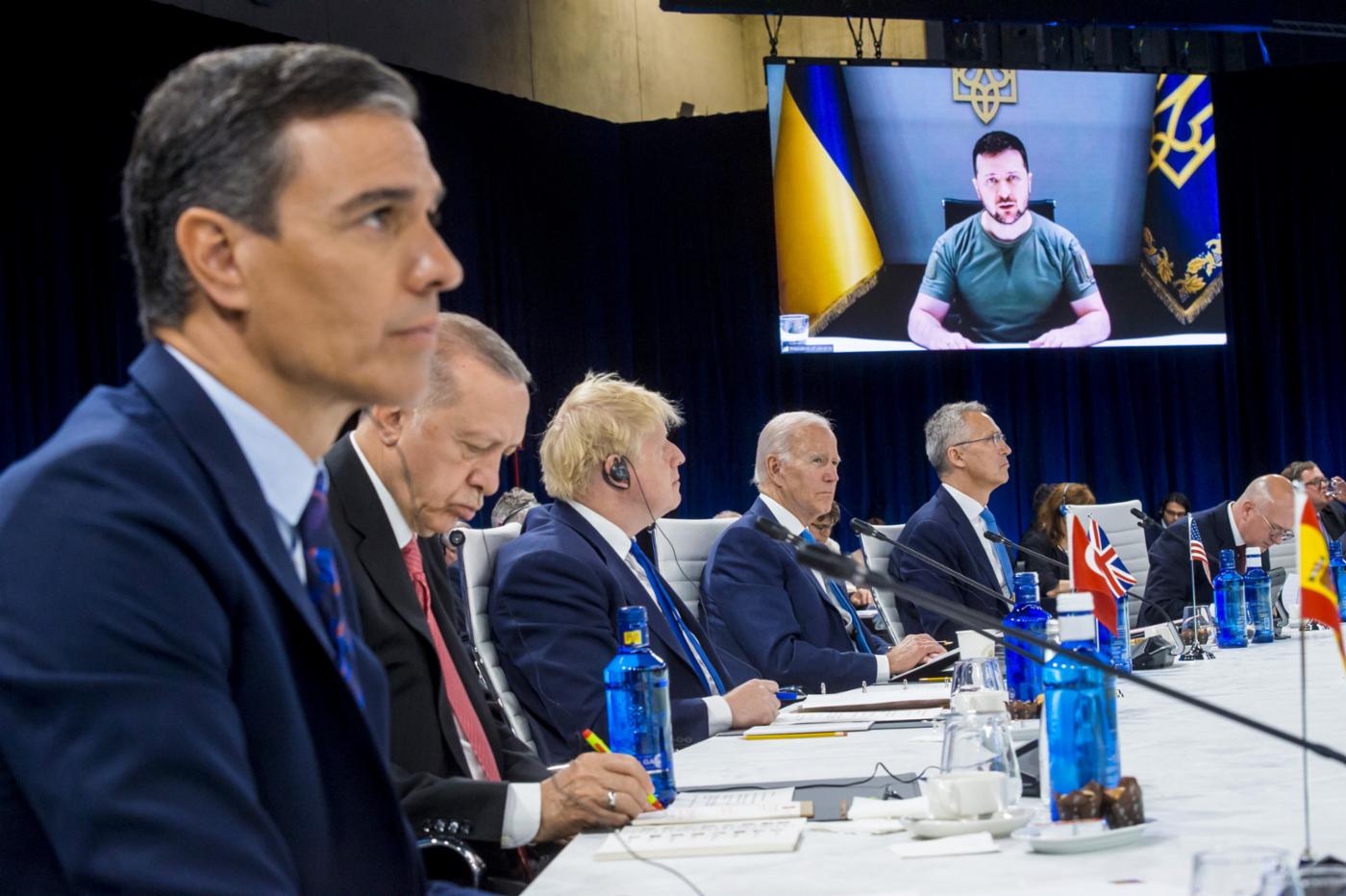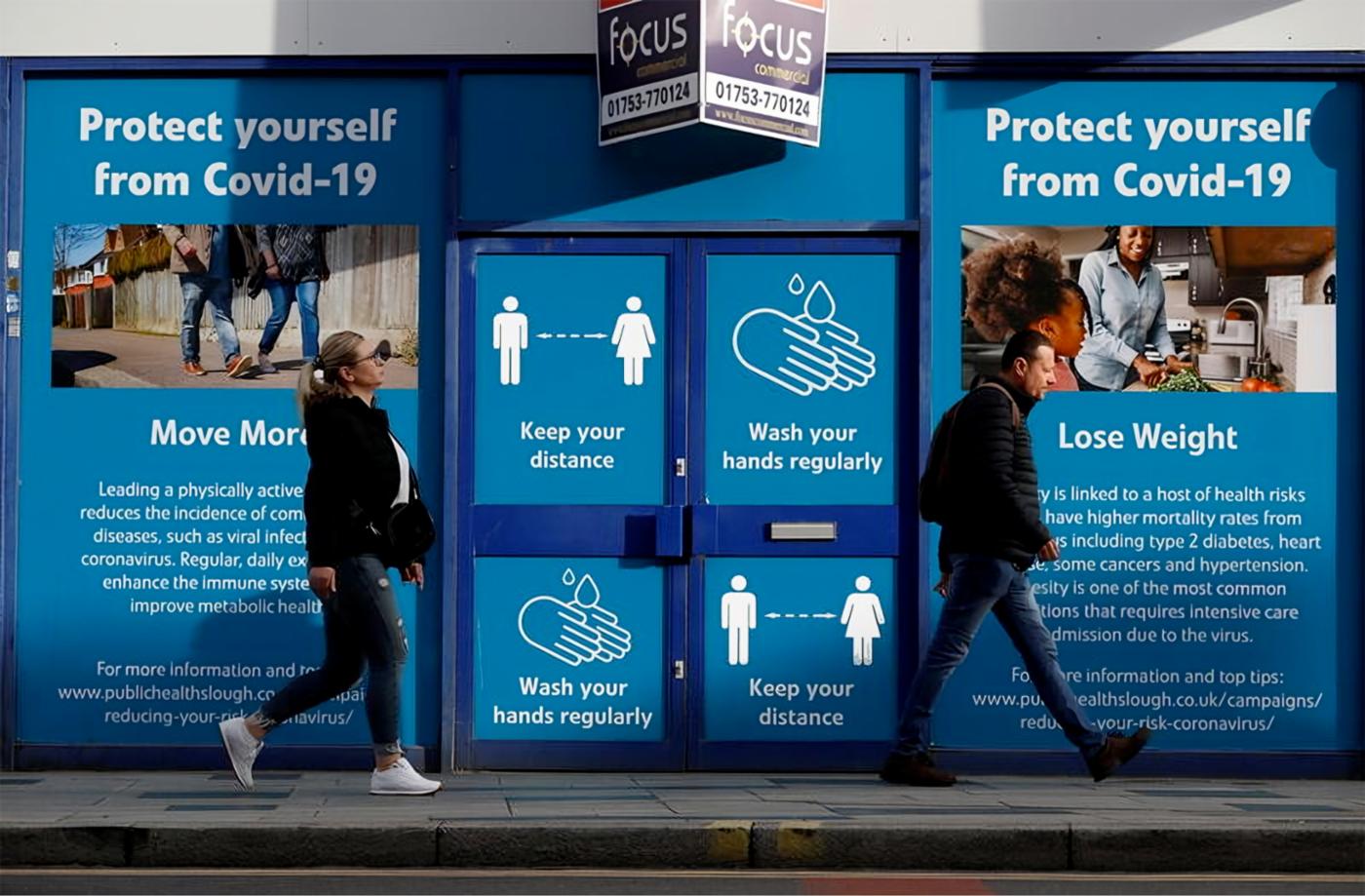In the face of the “pervasive instability and threat” described by NATO’s Strategic Concept, Allies must do more to strengthen the resilience of our societies. We face a growth in the challenges we face together, illustrated by the UK’s Integrated Review describing the world as “volatile and contested”. As our National Resilience Framework sets out, we need a whole-of-society approach to better prepare ourselves for instability - and communication is crucial in delivering this by informing, mobilising and preparing populations.
The increasingly borderless media landscape has created opportunities for our adversaries to contest the information space, undermine global cooperation and weaken support for liberal democracy. Yet we can still bring the public with us. I have seen the power of communication to prepare for, mitigate against and recover from massive shocks. Whether tackling an immediate crisis or persuading people to change long-established mindsets and behaviours, truth powerfully told remains an essential tool in countering our adversaries.
UK government officials can claim a degree of professional excellence thanks to years of experience, working with allies and learning from our missteps. We act and communicate proactively on the basis of firm evidence and by learning from past experience. By learning from each other we can strengthen member states’ individual and collective resilience, so that when the next crisis comes we are all better prepared.
Communicating in a crisis
In recent years, the UK has faced a range of emergencies requiring tailored responses. It is now five years since the appalling Salisbury poisoning, for example, when Russia demonstrated its flagrant disregard for international norms through the indiscriminate use of a nerve agent that resulted in loss of life. We responded with irrefutable evidence and clear messaging, as exemplified by then-National Security Adviser Sir Mark Sedwill’s letter to NATO Secretary General Jens Stoltenberg. This formal, official correspondence drew on declassified intelligence to set out how “only Russia” had the “technical means, operational experience and the motive” to carry out the March 2018 attack. It ultimately led to the mass expulsion of Russian intelligence officers from countries around the world.

The forensic tent, covering the bench where Sergei Skripal and his daughter Yulia were found, is repositioned by officials in protective suits in the centre of Salisbury,
Great Britain, 8 March, 2018. © Reuters
As each new situation arises, part of my role as the lead communicator on cross-government national security issues is to obtain clarity of objectives from the responsible Minister. I have found political leaders have a strong instinct for what really matters in these tense moments. Their authority springs from their democratic legitimacy, which in turn reflects their understanding of and responsiveness to public perception.
In a crisis, they need expert advice backed up by trustworthy data. The Covid-19 pandemic underlined how useful a coordinated communication centre is in gathering this information. We built a cross-government communications hub from scratch that brought together media, marketing, digital, data visualisation, insight and behavioural science expertise. The team worked from one site and responded quickly with evidence-based decisions as the pandemic unfolded. For example, our data showed that vaccine hesitancy - especially amongst certain communities and groups - presented a real challenge at the start of the pandemic. A concerted campaign was created to reduce misinformation and explain how the vaccines worked, resulting in a significant reduction of hesitancy rates. The communications hub model has given us the means to rapidly deliver high-quality and timely messaging without sacrificing the rigour of what we might once have called ‘peacetime’ communication.
Ends, ways and means
Our most powerful tool to mitigate crises by making societies more resilient remains this longer-term strategic communication. It empowers individuals to take action reducing the risk they and others face, preparing them before the next emergency to help them stay safe.
One of the letters I have been proudest to receive is from a senior Metropolitan Police Service officer praising a government campaign, which encouraged people to report suspicious objects or packaging. By helping officers uncover terrorist plots, we were told, it had saved lives. There is a limit to what communication can achieve, but properly executed, it sits alongside the other tools at our disposal to prevent the worst from happening.
General Sir Nick Carter, the former UK chief of the defence staff, once reminded me that strategy means bringing together the “ends, ways and means” to deliver a goal. In strategic communications, our goal is usually to inspire behavioural change to a specific timetable. To do this we deploy a sustained, coordinated and unified series of public interventions, which utilise all the communications disciplines.
The result is timely, relevant communication, which acts as an enabler. Its delivery must be rooted in democratic values of trust and openness. Above all, it must be firmly on the side of the people, as the Ukrainian response to Russia’s full-scale invasion demonstrates.
The Zelenskyy rules: a case study
Ukraine’s president, government and people have shown us the benefits of building a united purpose based on values. In particular, I have observed seven tactics used by President Zelenskyy and his team to pioneer a novel mixture of public communication.
- Volume. The nature of the conflict necessitates ‘always on’ communication.
- Openness to risk. President Zelenskyy rightly accepts the downsides that inevitably come with this high-tempo approach - not least risks to his own safety when visiting the frontline.
- Direct communication. President Zelenskyy has made Ukraine’s case at innumerable events around the world, proactively communicating with audiences Ukraine wishes to influence.
- Clarity. Phrases like ‘with or without you’ and ‘I need ammunition, not a ride’ help encapsulate the message. This tailored approach strengthens bonds and clarifies the desired outcome.
- Inspirational messaging. The relevance and timeliness of the messages conveyed also create influence and work as a motivator.
- Challenge to Moscow. At the same time, President Zelenskyy addresses his opponents directly in a reasonable, compelling way.
- The three ‘Vs’: video, visual, voices. All the above is conveyed through a default communication package which is video-led and delivered via social media with a credible voice and great visual impact.
Taken together we see a new approach to the global digital media environment. President Zelenskyy and his team have adopted a calculated nimbleness that acts both as a deterrent to Ukraine’s adversary and an inspiration to its supporters. As Ukraine’s example shows, how we set ourselves up to communicate matters as much as the thrust of our messaging.

Pedro Sánchez (Prime Minister of Spain), Recep Tayyip Erdoğan (President of Türkiye), Boris Johnson (Prime Minister, United Kingdom), Joe Biden (President of the United States), NATO Secretary General Jens Stoltenberg and Volodymyr Zelenskyy (President of Ukraine) during the NATO Summit in Madrid, Spain, held on 28-30 June 2022. © NATO
Getting strategic communication right
Effective strategic or crisis communication is only possible if delivered by a professional and united communications cadre. Government and military communication teams must avoid being underprepared, lacking skills or operating in silos. These shortcomings make the practice of successful strategic communication almost impossible, unless by accident. If communicators in government and the military want to take strategic communications seriously there are three steps they need to take.
1 - Adopt the best standards
Reaching today’s audiences means using the full spectrum of communication approaches. We cannot rely on the old standby of what I call SOS – ‘sending out stuff’. Our adversaries have invested heavily in mass digital communication to create an industry of disruption, which makes the truth harder to discern. Our communicators need the skills to get messages heard in an information environment where everybody has a voice and algorithms influence which voices ultimately reach individuals.
2 - Work together
That professional excellence needs to flow through the whole communications community. The focus must be everyone delivering on shared objectives to protect the public, not on promoting the ‘cap badge’ or protecting the agency. Just as our societies now operate through a plethora of integrated systems and networks, so our communicators need to set aside organisational and geographic boundaries and recognise the unity of our objectives. As Elizabeth Kennedy Trudeau wrote recently for NATO Review, NATO communicators will succeed in countering disinformation only “through a comprehensive and coordinated effort”. By practising and preparing for contingencies together and learning lessons from one another we can increase our overall effectiveness.
Even when acting at the national level we can cooperate. Under NATO 2030, Allies are working towards "nationally-developed resilience goals" by committing to "develop a proposal to establish, assess, review and monitor resilience objectives". The UK Government’s own Resilience Framework recognises that events in or impacting other countries and ungoverned spaces may rapidly evolve to affect our country. But we have learned how to mitigate the risks spread across our society’s networks and systems. The UK Government’s national Cyber Aware campaign, for example, has reduced systemic risk by building individuals’ cybersecurity understanding and behaviour.
3 - Take a campaign approach
Third, government and military communicators should adopt a campaign model in which every intervention contributes to a wider plan. The campaign must have the ability to deliver robust rebuttals; it should be delivered to a timetable, giving it a sense of urgency; and it must be creative, drawing on human insight to identify what will move people to take action themselves.
In the UK we use the OASIS format, which is also adopted by NATO to say that every communications activity needs to have a clear ‘objective’; a specific ‘audience’; a defined ‘strategy’; steps to ‘implementation’; and rigorous ‘scoring’ and evaluation.
The UK Cabinet Office’s National Security Communications Team has recently implemented a number of targeted campaigns. Its ‘Don’t Feed The Beast’ campaign gave the public five easy tests to identify dangerous misinformation which led to a 21% increase in people fact-checking stories before sharing them. A DigiTech campaign prompted a third of the target audience to adopt the campaign’s ‘golden behaviours’ for doing business with China. Its Trusted Research campaign drove a 56% increase in target audiences’ ability to identify threats.
These campaigns meet specific needs. Their contribution is measurable and tangible. But each only makes a small contribution to the overall goal of increasing our collective resilience. When we expand this objective to cover all one billion people across the populations of NATO member countries – and the millions more who live in NATO partner countries, including Ukraine – the scale of the task we face becomes clear.
Conclusion
The answer, based on the recent past, is yes. NATO Allies and partners should be proud of the role we have played in supporting Ukraine. Effective communication has played its part in this effort - the decision to openly disclose intelligence about Russia’s impending invasion ‘pre-bunked’ the Kremlin’s narrative, for example. By creating awareness and understanding amongst our own populations, we have increased trust in the national and NATO response.
When the next emergency comes, NATO governments will once again need to use crisis communications to show grip; demonstrate action; give people a sense of agency; convince them they have a plan; and provide hope for the future. Until then, we need to use effective strategic communication to create the conditions for resilience to flourish across society. As awareness grows about the preponderance of possible events now capable of challenging our economic and societal wellbeing, we will see more and more citizens proactively seeking the tools and support they need. All resilience is local, but recent history shows we are stronger when promoting it together.
The world may be changing fast but truth, powerfully told, will always retain its power and potency. In April 2018, Sir Mark wrote to the Secretary General: “I know that NATO will remain seized of the need to confront the increasingly aggressive pattern of Russian behaviour.” Five years on, that confidence in NATO’s ability to stand firm remains as strong as ever.

